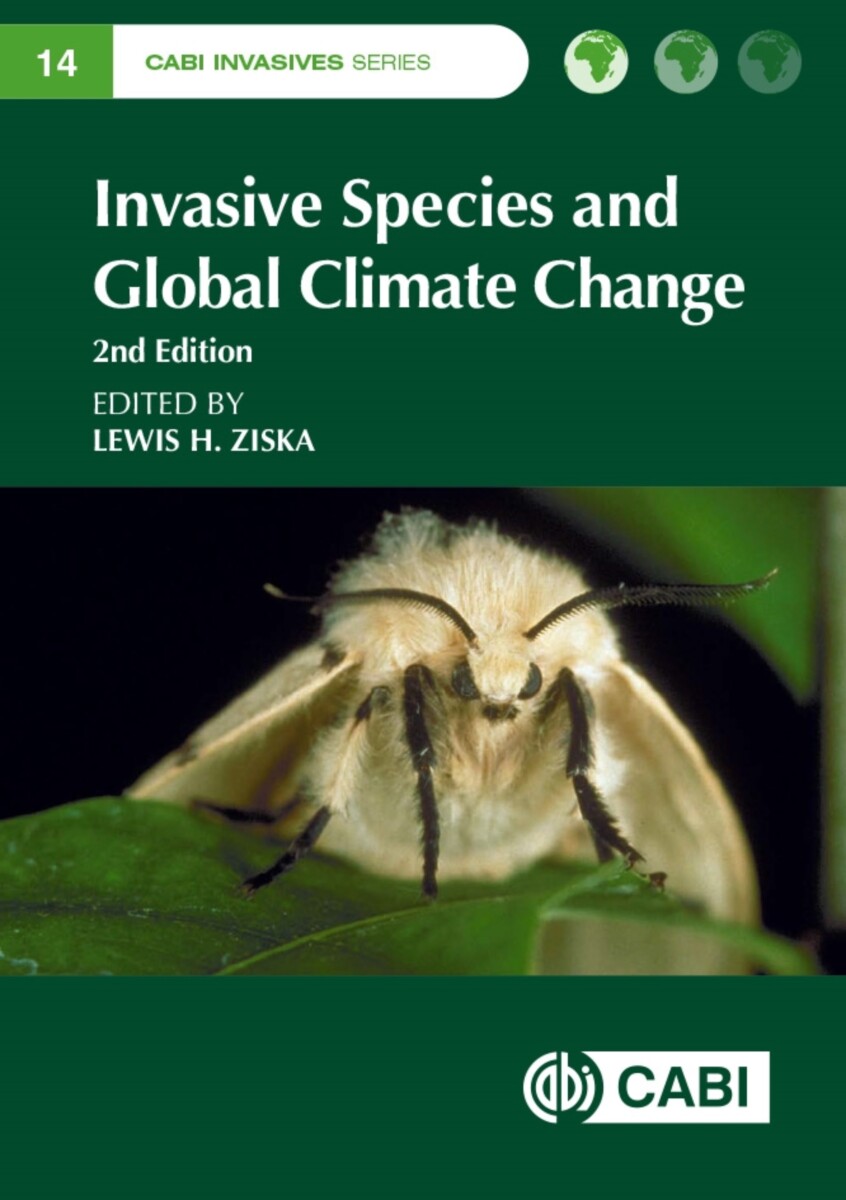- Publisher
CABI - Published
20th December 2022 - ISBN 9781800621435
- Language English
- Pages 352 pp.
- Size 6" x 9"
This book addresses topics related to the impact of invasive species including biosecurity, demographics, species diversity, and food security. It is meant for researchers, upper-level students, and policy makers, and provides a factual basis for the underlying science and a discussion of that information with respect to current and future impacts and possible solutions. This book explores the nexus of climate change and biological invasions, resulting impacts (biological and economic) and assesses ways to reduce vulnerability and increase the resiliency and sustainability of managed and unmanaged ecosystems. The book has three parts, focusing on: (1) the dimensions of the problem; background and science; (2) case studies; (3) Management: detection, prevention, control and adaptation. This revised edition examines a wide range of topics and regions, the underlying science, examples (case studies) from around the world, and ways and means to recognize, manage and control the consequences. It includes new cases and new threats; for example, a chapter summarizing case studies regarding climate change and invasive species that are also disease carriers (e.g. ticks and Lyme disease).
- Covers a wide range of topics and areas
- Examines the synergy between invasive species and climate change
- Explains options to control and mitigate effects
1. Introduction—Lewis H. Ziska
Part I. Dimensions of the Problem: Background
2. Communicating the Dynamic Complexities of Climate, Ecology and Invasive Species—Lewis H. Ziska
3. Climate Change and Plant Pathogen Invasions—Karen A. Garrett
4. Analysis of Invasive Insects, Links to Climate Change—Andrew Paul Gutierrez and Luigi Ponti
5. Climate Change, Plant Traits, and Invasion in Natural and Agricultural Ecosystems—Dana M. Blumenthal and Julie A Kray
Part II. Case Studies
6. Non-native Species in Antarctic Terrestrial Environments: how climate change and increasing
human activity are compounding the threat of invasion—Kevin A. Hughes and Peter Convey
7. Interactions Between Climate Change and Species—Invasions in the Marine Realm—Cascade J. B. Sorte, Ryan A. Beshai, Amy K. Henry, Samuel A. Mahanes, Racine E. Rangel, and Heidi R. Waite
8. Ragweed in Eastern Europe—László Makra, István Matyasovszky and Áron József Deak
9. Climate Change and Biological Invasions in South Africa—Nicola J. van Wilgen, Katelyn T. Faulkner, Tamara
B. Robinson, Josie South, Heath Beckett, Charlene Janion-Scheepers, John Measey, Guy F. Midgley and
David M. Richardson
10. Climate Change and ‘Alien Species in National Parks’: revisited again—Catherine Jarnevich, Terri Hogan, Jennifer Sieracki, Christine Lipsky and John Wullschleger
11. Climate Change and Invasive Human Pathogens—Cecilia Sorensen, Beth Gillespie and Samantha Ahdoot
Part III. Management: Detection, Prevention, Control and Adaptation
12. Identifying Invasive Species in Real Time: Early detection and distribution mapping system (EDDMaps) and other mapping tools—Rebekah D. Wallace and Charles T. Bargeron
13. Global Identification of Invasive Species: The CABI Invasive Species Compendium as a Resource—Hilda Diaz-Soltero
14. The Biogeography of Invasive Plants—Projecting Range Shifts with Climate Change—Bethany A. Bradley
15. Assessing and Managing the Impact of Climate Change on an Invasive Weed, Yellow Star Thistle—Andrew Paul Gutierrez and Luigi Ponti
16. Modelling and Managing Invasive Weeds in a Changing Climate—Anna S. Westbrook, Emma Nikkel, David R. Clements and Antonio DiTommaso
17. Early Detection and Rapid Response: A cost effective strategy for minimizing the establishment
and spread of new and emerging invasive plants by global trade, travel, and climate change—Randy G. Westbrooks, Steven T. Manning and John D. Waugh
18. Adapting to Invasions in a Changing World: Invasive species as an economic resource—Matthew
A. Barnes, Andrew M. Deines, Rachel M. Gentile and Laura E. Grieneisen"
Lewis H. Ziska
Lewis Ziska is an Associate Professor in the Environmental Health Sciences at the Mailman School of Public Health at Columbia University. After graduating from the University of California, Davis, he began his career as a Smithsonian fellow, and then took up residence as the Project Leader for global climate change at the International Rice Research Institute in the Philippines before a 24-year career at the USDA's Agricultural Research Service. He has worked primarily on documenting the impact of climate change and rising carbon dioxide levels on: Crop selection for CO2 responsiveness to improve production; Climate and agronomic pests, including chemical management; Climate, plant biology and public health impacts on food security with a focus on nutrition and pesticide use. Dr. Ziska is a contributor to the 2014 International Panel on Climate Change (IPCC) report (Food Security Chapter, https://www.ipcc.ch/site/assets/uploads/2018/02/WGIIAR5-Chap7_FINAL.pdf) and is a contributor to the AR6 report (due June 2022). He is also a contributor to the 2014 and 2018 National Climate Assessment (NCA) (Public Health Chapter and Air quality chapter respectively); and, The Impacts of Climate Change on Human Health in the United States: A Scientific Assessment. His most recent book is: Agriculture, Climate Change and Food Security in the 21st Century: Our Daily Bread, through Cambridge Scholars publishing.


